The Acropolis of Athens, a symbol of ancient Greek civilization, stands as a monumental complex atop a rocky hill in Athens. Built primarily during Athens’s Golden Age from 461 to 429 BC, it consists of several temples and buildings celebrating the goddess Athena and displaying the cultural and architectural prowess of Classical Athens. The Acropolis showcases Classical Greek architecture, particularly in the Parthenon, its centerpiece. This style is characterized by elements like Doric columns, symmetrical proportions, and the use of marble. The Acropolis’s construction employed advanced engineering principles, particularly in earthquake resistance. Architects Ictinus and Callicrates designed the Acropolis under the supervision of the sculptor Phidias. Their work on the Parthenon is considered a crowning achievement in Classical architecture, showcasing elegant design and detailed decorations. The Acropolis served multiple purposes, including defense, religious rituals, and as a symbol of Athenian power. Its strategic location and architectural features, such as the Propylaea gateway and the Parthenon, facilitated these functions, reflecting Classical ideals of harmony. The Acropolis is maintained by the Acropolis Restoration Service (YSMA), which conducts ongoing restoration and conservation work. For architects and enthusiasts, the Acropolis offers specialized tours providing insights into its architectural and engineering aspects.
What is the Acropolis of Athens?
The Acropolis of Athens is an ancient fortified citadel located on a rocky outcrop above the city of Athens, Greece. It contains the remains of several old buildings of great architectural and historic significance, the most famous being the Parthenon Temple. The Acropolis was first inhabited in the Neolithic period and flourished in the 5th century BCE during Athens’ Golden Age under Pericles. Many of the monuments seen today were built between 447 and 432 BCE to celebrate Athens’ power and wealth. The Acropolis of Athens is an ancient fortified citadel located on a rocky outcrop approximately 490 feet (150 meters) above sea level in Athens, Greece. It contains the ruins of several old buildings of great architectural and historic importance, the most famous being the Parthenon temple dedicated to the goddess Athena. The Acropolis of Athens is in the center of the modern city of Athens, Greece. It sits on a rocky outcrop at the city’s highest point, rising approximately 490 feet (150 meters) from sea level. The Acropolis is about 1,608 feet (490 meters) southwest of the Greek Parliament building and Syntagma Square in downtown Athens. The Acropolis Citadel covers an area of 919 feet (280 meters) long and 512 feet (156 meters) wide. The Acropolis of Athens has a history spanning over 5,000 years. The site was first inhabited in the Neolithic period, around 3000 BCE. By the 13th century BCE in the Mycenaean period, it featured fortification walls, establishing it as an ancient citadel site. Most of the monuments visible on the Acropolis today were built during its golden age in the 5th century BCE.
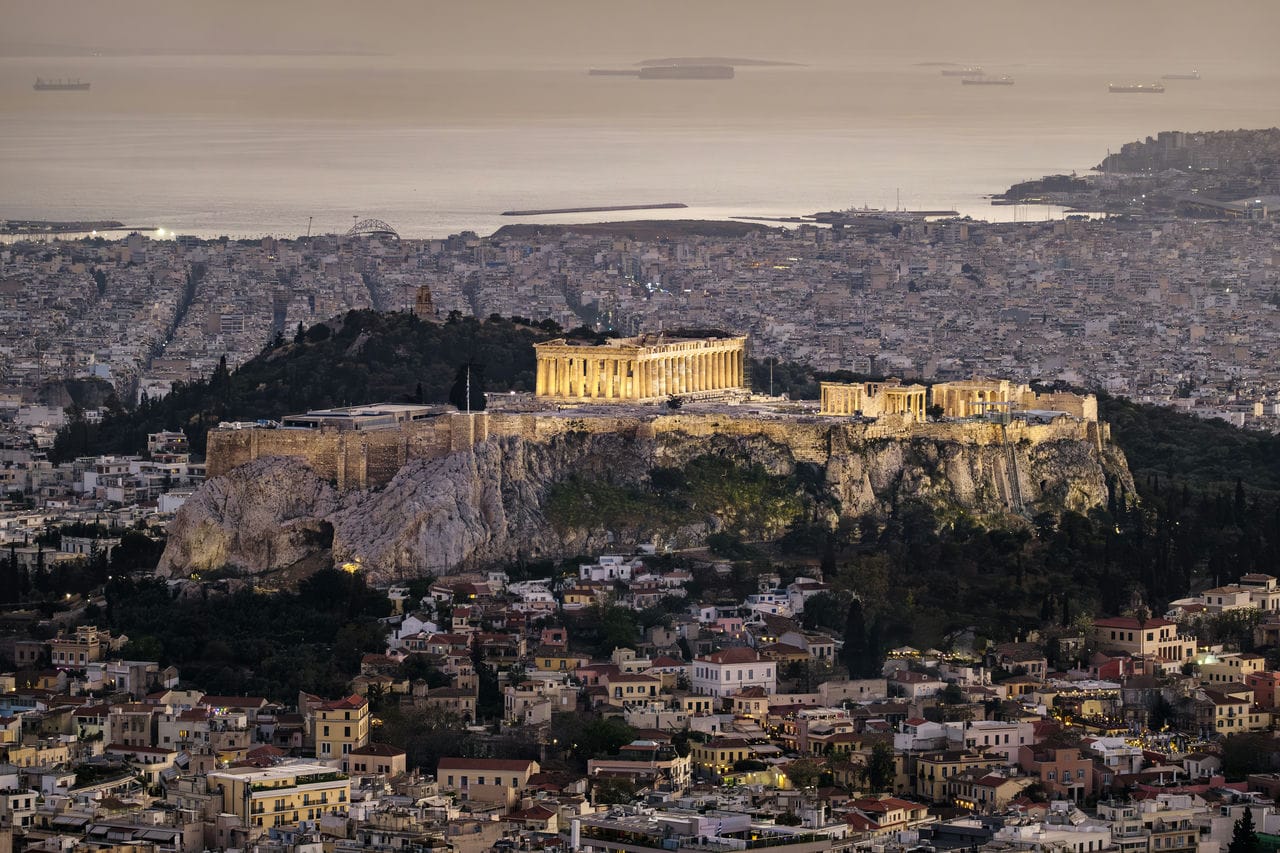
Significant building activity on the Acropolis began after Athens became a democracy in 508 BCE. The statesman Pericles initiated an ambitious building project in 447 BCE to celebrate Athens’ power and wealth, funded by Delian League treasury funds. The leading architects were Phidias, who oversaw sculpture and construction, and Ictinus and Callicrates, who were the architects of the Parthenon. Under Phidias’ direction, the architects Ictinus and Callicrates designed the Parthenon and other monuments. Sculptor Agoracritus, a Phidias student, executed the Athena Parthenos cult statue inside the Parthenon. The sculptors Alcamenes and Amphicrates also contributed extensive marble carvings seen on pediments, metopes, and friezes across the Acropolis monuments. Hundreds of skilled stonemasons and builders brought these monumental marble structures to life.
What architectural style is most prominent in the Acropolis of Athens?
The most prominent architectural style seen in the ancient Acropolis of Athens is Classical Greek architecture, exemplified in structures like the iconic Parthenon. The Acropolis, meaning ‘high city,” is on a hill towering over Athens. The centerpiece Parthenon Temple dedicated to Athena is considered the apotheosis of Classical architecture with the base Stylobate platform, the exterior colonnade of Doric columns, and two inner sanctum chambers – the naos and pronaos. The colossal columns have pronounced flutes tapering off towards the top, simple Doric capitals, and no base enhancing monumentality.
What structural engineering principles are employed in the construction of the Acropolis of Athens?
The Acropolis of Athens features several structural engineering techniques in its design. Firstly, the Acropolis of Athens was built with a keen understanding of seismic activity. The ancient engineers designed the structures, particularly the columns, to have excellent seismic performance properties, enabling them to withstand earthquakes. This is part of why the Acropolis has survived many earthquakes over its 2,500-year history, where other, more modern constructions have fallen. Secondly, the structure of the Acropolis employed modular columns. These were made to be constructed and transported more quickly and designed to have excellent seismic performance properties. The columns were built in such a way that they could withstand earthquakes. Thirdly, the Acropolis structures have minimal severe problems. The Acropolis Monuments Restoration Service, a Special Service of the Greek Culture Ministry, has worked to solve all static issues, even on the Parthenon, which is a large monument. Fourthly, the Parthenon, one of the most iconic structures on the Acropolis, employs a triple anti-seismic protection system. This includes using “slices” in the pillars of the structure, which were perfectly carved and matched with each other to withstand the earth’s vibrations. Lastly, the restoration and conservation of the Acropolis monuments follow specific principles and methodologies. These include the preservation of the structural system of the monuments, the use of titanium bars, and suitable cement mortar for joining fragments of authentic marble or supplements of new marble.
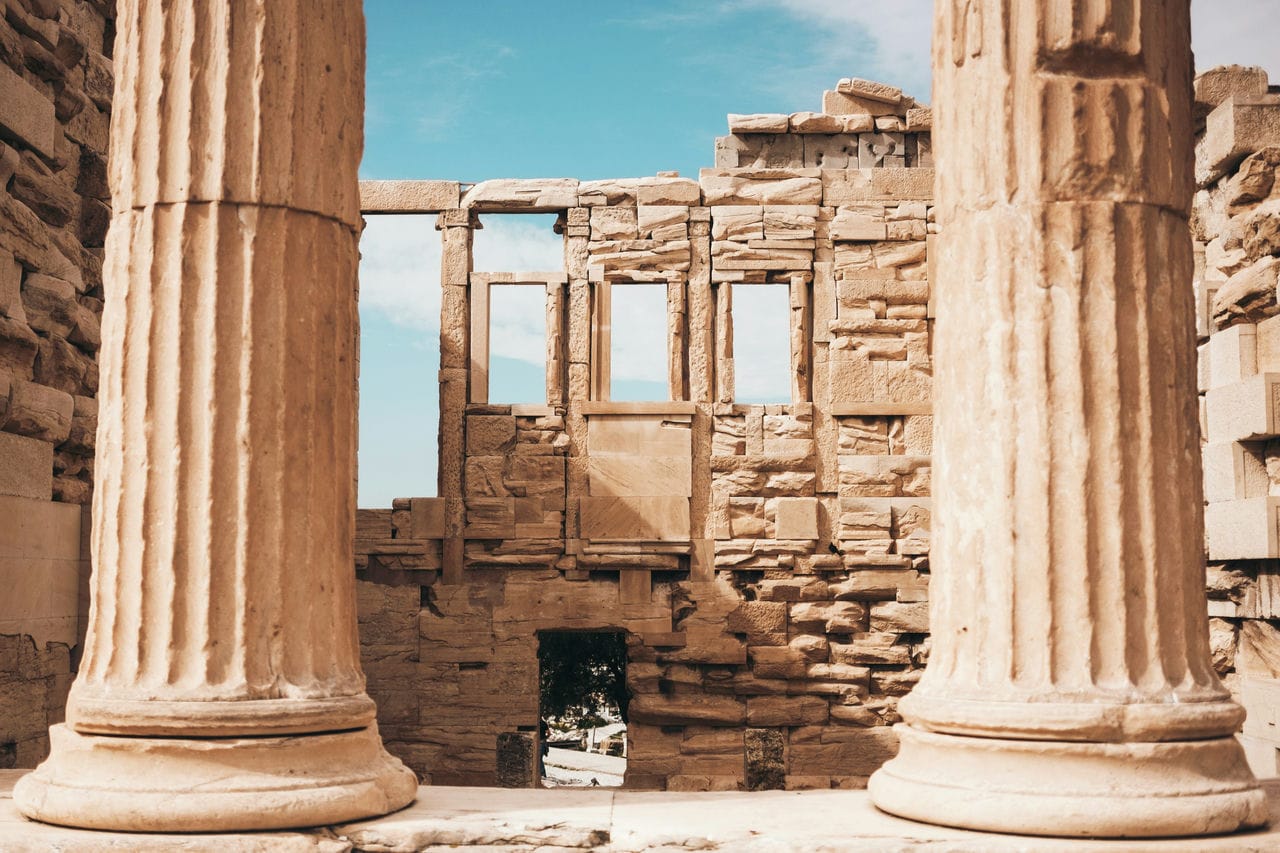
Who designed the Acropolis of Athens?
The Acropolis of Athens, erected between 460 and 430 BC as an architectural masterwork was built under the direction of 3 legendary architects – Callicrates, Ictinus, and Phidias. Ictinus and Callicrates, in the middle part of the 5th century BCE during Classical Athens’s ascendency, designed and constructed the Acropolis’s temple, the Parthenon. Considered a legendary duo in Ancient Greek architecture for their pioneering work on important 5th-century dynastic structures, the Parthenon is regarded as Ictinus and Callicrate’s crowning achievement, establishing them as pioneers of Classical architecture. As Pericles’ advisor, the esteemed sculptor Phidias closely supervised Parthenon’s overall artistic vision. Phidias worked on the iconic sculptures decorating the Parthenon and the towering Athena Parthenos statue housed inside the temple – significant works surviving from ancient Greece representing Classical style. No other surviving structures are attributed to Ictinus and Callicrates, making Parthenon their sole architectural legacy showcasing Classical structures that exude refined elegance and textual decorations.
What are the historical design influences visible in the Acropolis of Athens?
The Acropolis of Athens incorporates several historical design influences. Firstly, the architecture of the Acropolis shows influences from the Mycenaean period, as the Acropolis served as the fortified royal residence in the Bronze Age between 1600 and 1100 BC. The location and defensive nature of the Acropolis reflect these early Mycenaean influences. Secondly, the Classical architecture style of the 5th century BC significantly influenced the design of the Parthenon and other Acropolis structures. The style emphasizes principles like proportion, and moderation, as seen in the Parthenon’s design, which incorporates Doric and Ionic architectural orders. Thirdly, the buildings of the Acropolis demonstrate the Athenians’ dedication to the goddess Athena. The structures glorify Athena and the triumph of the Athenians over invading forces. The mythological and religious beliefs of the Athenians are expressed through the iconography and orientation of buildings like the Parthenon. Fourthly, the splendor of the Acropolis shows the influence of the great statesman Pericles, whose large-scale rebuilding program transformed the site into a symbol of Athenian dominance. The use of fine materials like marble demonstrates Pericles’s emphasis on Athens’ imperial power. Lastly, preservation and restoration efforts have ensured that classical designs and construction techniques remain visible. Principles guiding conservation maintain architectural components’ authentic materials, structural systems, and autonomy. This allows the diverse Classical, Archaic, and other influences to stay intact for study.
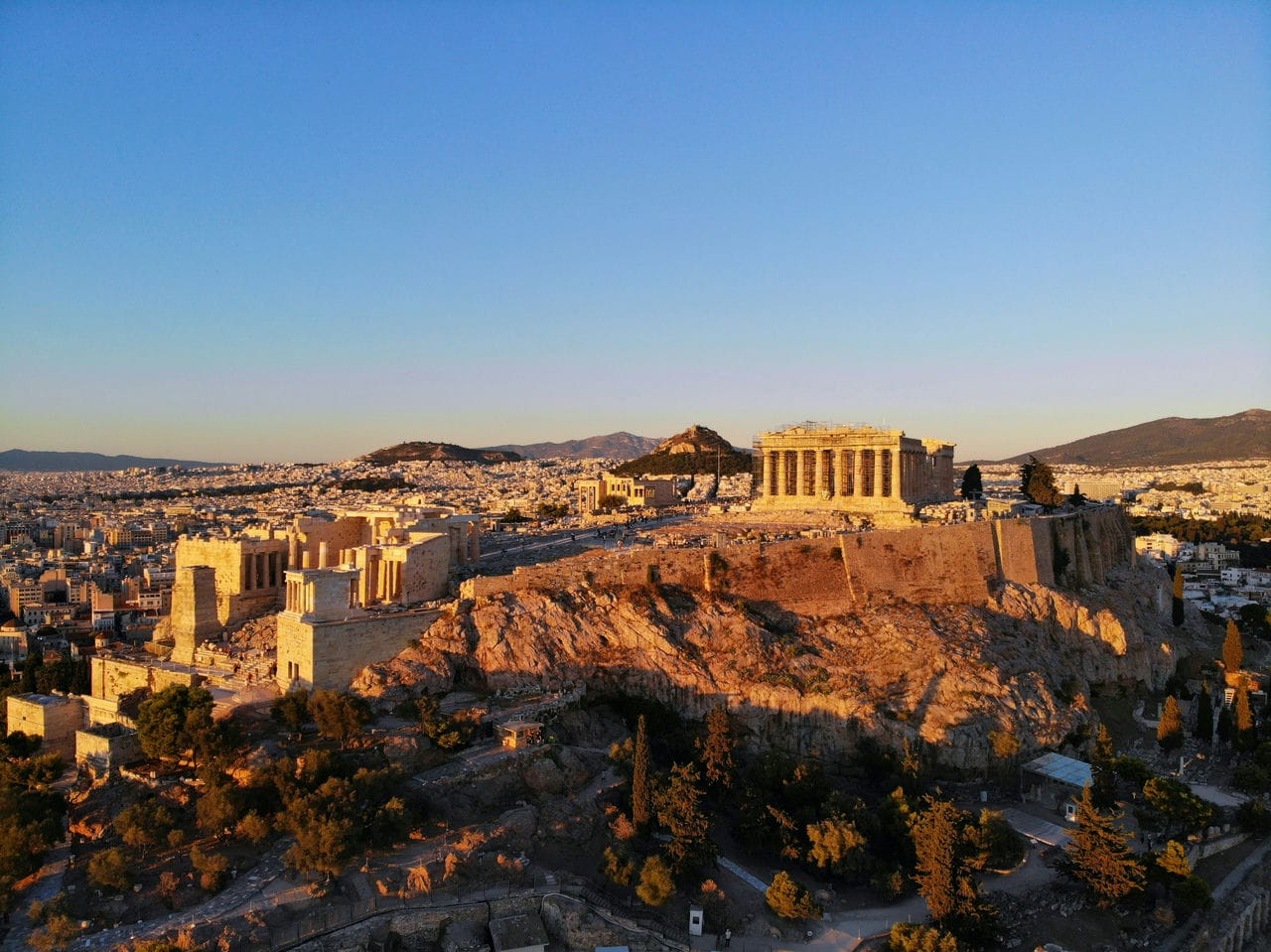
How has the Acropolis of Athens influenced the design of other buildings in Greece?
The Acropolis of Athens has influenced the design of other buildings in Greece in several key ways. Firstly, the Acropolis served as an architectural model for many later buildings in Greece. Its Classical Greek structures, like the Parthenon, established ideals of harmony, proportion, and grace that were emulated across the Greek world. The Temple of Olympian Zeus in Athens copied the columns and triangular pediment design of the Parthenon. Other Greek buildings also borrowed elements like tall columns, symmetrical shapes, and columned façades. Secondly, the ornate Corinthian-style architecture of the Acropolis inspired many Hellenistic and Roman structures in Greece. Although less common than Doric or Ionic styles in Classical times, the Corinthian capital decorations were revived and widely used after the 4th century BC. The Tower of the Winds and Library of Hadrian in Athens adapted the Corinthian columns and details. This style remains influential in modern Greek architecture, as seen in buildings like the National Library and Saint Gregory Palamas Church. Thirdly, the Acropolis introduced new engineering techniques and construction methods to Greece. Its buildings demonstrated advanced stonemasonry skills and clever optical refinements. The Sanctuary of Asclepius copied the Acropolis’s clever handling of visual distortions. Other buildings also tried to emulate the Acropolis’ harmonious proportions using a similar modular design system.

What purpose does the Acropolis of Athens serve and how does the design help?
The Acropolis of Athens was an ancient fortified citadel and sacred precinct containing monumental temples like the Parthenon to venerate the city’s patron goddess Athena. The temple housed Phidias’s towering Athena statue, visible throughout Athens. Architectural refinements like inclined columns, calculated spacing, and life-sized sculptural details suited religious rituals and cultural displays while reflecting Classical ideals of harmony. The integrated architectural landscape accommodating civic necessities from defense and refuge to ritualistic expressions of Athenian identity allowed the Acropolis to function as an ideological symbol of Athens’s military power, cultural sophistication, and sacred eminence. Layers of human approach within precise architectures made the Acropolis the physical embodiment of Athens’s growing influence in the Classical era.
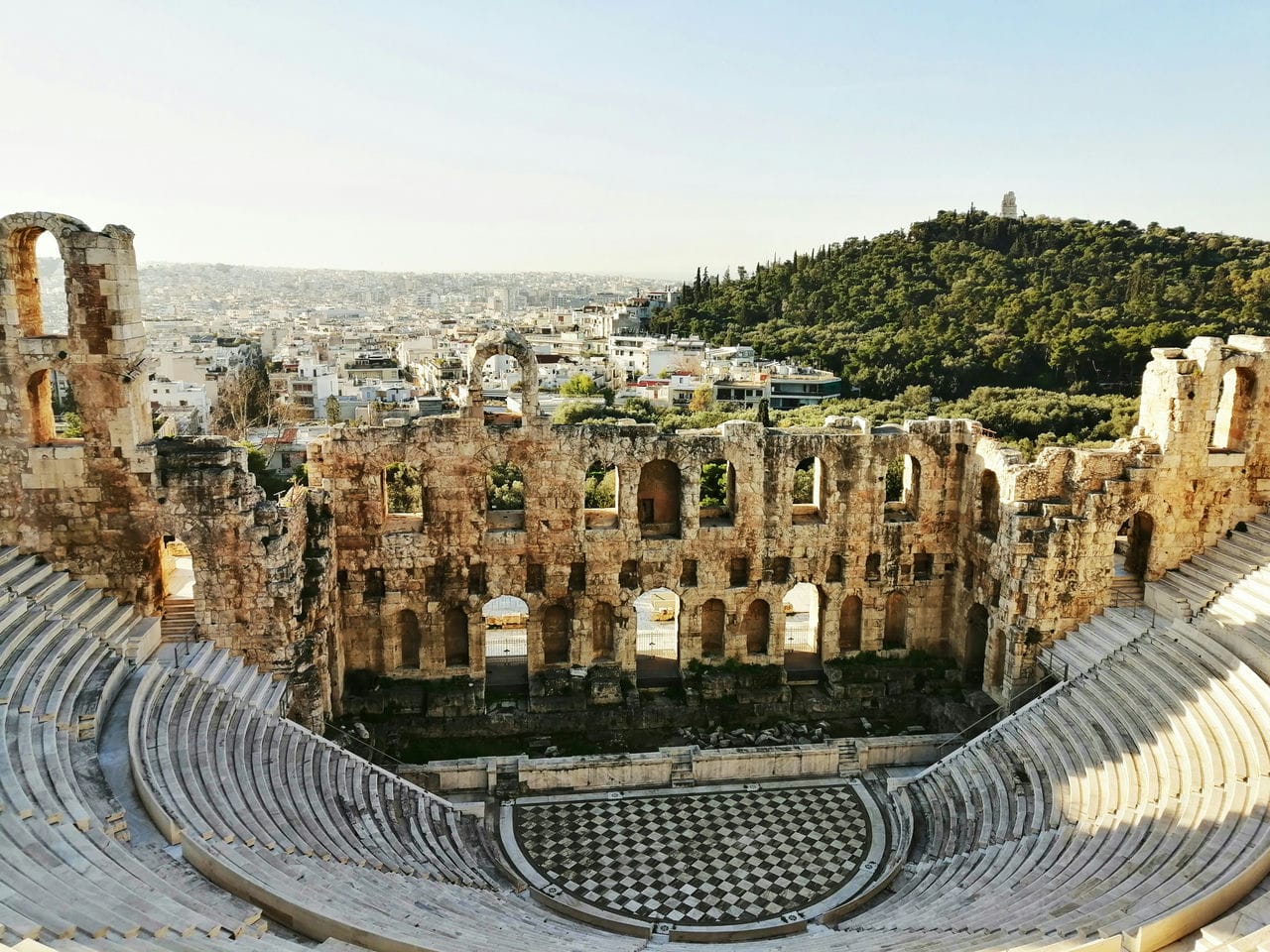
How is the Acropolis of Athens maintained?
There are three key aspects of how the Acropolis of Athens is maintained. Firstly, the Acropolis is maintained by the Acropolis Restoration Service (YSMA), a department of the Greek Ministry of Culture dedicated to conserving and restoring the monuments. The YSMA carries out ongoing restoration and conservation work like structural repairs, surface cleaning, documentation, and monitoring of the condition of the monuments. They are restoring parts of the Parthenon and the perimeter walls through the National Strategic Reference Framework program funded by the EU. Secondly, regular maintenance protects and preserves the monuments against environmental damage. This includes addressing issues like acid rain erosion, dampness, and natural disasters threatening the monuments’ structural integrity. Maintenance measures involve cleaning, sealing cracks, and stabilizing foundations. The YSMA also monitors humidity and seismic activity to assess risks and determine necessary interventions. Thirdly, strict legal protections safeguard the Acropolis. Greek laws designate it as an archaeological site and protected monument area. International organizations like UNESCO also recognize its outstanding universal value by listing it as a World Heritage Site. Designations require managing authorities to uphold conservation standards and best practices when doing any work.
How does the Acropolis of Athens reflect cultural and contextual relevance in its design?
The Acropolis of Athens was the preeminent architectural and artistic complex of Ancient Greece, reflecting Athenian society’s cultural values and political ideals. Its temples embody the classical Greek ideals of harmony, rationality, and humanism through graceful proportions and elegant details. The Parthenon showcased these principles in its elaborate yet balanced sculptural program celebrating Athenian democracy and power. The Acropolis was deliberately visible across Athens as a proud symbol of the city’s ascendancy in the 5th century BCE. Its monuments were designed to be impressive civic landmarks, with the Propylaia gateway conveying a sense of grandeur for visitors entering the sacred precincts. The structures also responded to the site – the Erechtheion adapted its unusual plan to preexisting shrines and the bedrock landscape. The Acropolis sanctified the city, housing the cult statue of its patron goddess Athena. Ritual processions wound up to the temples where sacrifices honored the gods.
What architectural trend or movement does the Acropolis of Athens represent?
The Acropolis of Athens represents the architectural trend of Classical Greek architecture, specifically the Doric and Ionic orders, which were prevalent during the 5th century BCE. The Acropolis was a significant project of the democratic leader Pericles, who initiated an ambitious construction program in the 5th century BCE. The structures built during this period, including the Parthenon, the Erechtheion, the Propylaia, and the Temple of Athena Nike, are considered masterpieces of ancient Greek architecture. The Parthenon, the most famous structure on the Acropolis, is a prime example of the Doric order, the simplest and most sturdy of the Greek architectural styles. It is famous for its proportional harmony and the refinement of its details. The Erechtheion is an example of the more ornate Ionic order, with its distinctive scrolled capitals. These structures were not only pleasing but also served religious and civic functions, reflecting the cultural and societal values of the time. They were dedicated to the city’s patron goddess, Athena, and were sites for religious rituals and civic celebrations. The Acropolis also demonstrates the ancient Greeks’ mastery of building techniques and their understanding of optical illusions. They made adjustments to their designs to counteract these illusions, ensuring the structures appeared perfect to the human eye.
What are the challenges faced during the restoration of the Acropolis of Athens?
The Acropolis of Athens faced several key challenges during restoration. Firstly, one of the main challenges is the right balance between preservation and intervention. Determining appropriate levels of intervention requires careful consideration by expert committees overseeing the work. Secondly, protecting the long-term sustainability of the monuments poses difficulties. Environmental factors like acid rain, seismic activity, and increased visitor traffic accelerate the structures’ deterioration. Conservation efforts address these threats but cannot entirely prevent damage over time. More robust restoration plans try to implement preventative measures but face financial and technological limitations in tackling complex structural vulnerabilities. Lastly, navigating the elaborate legal protections and regulations surrounding the site also presents hurdles. As a UNESCO World Heritage Site, any initiatives must uphold stringent preservation standards. Overlapping local and international laws can complicate approval processes for restoration campaigns.
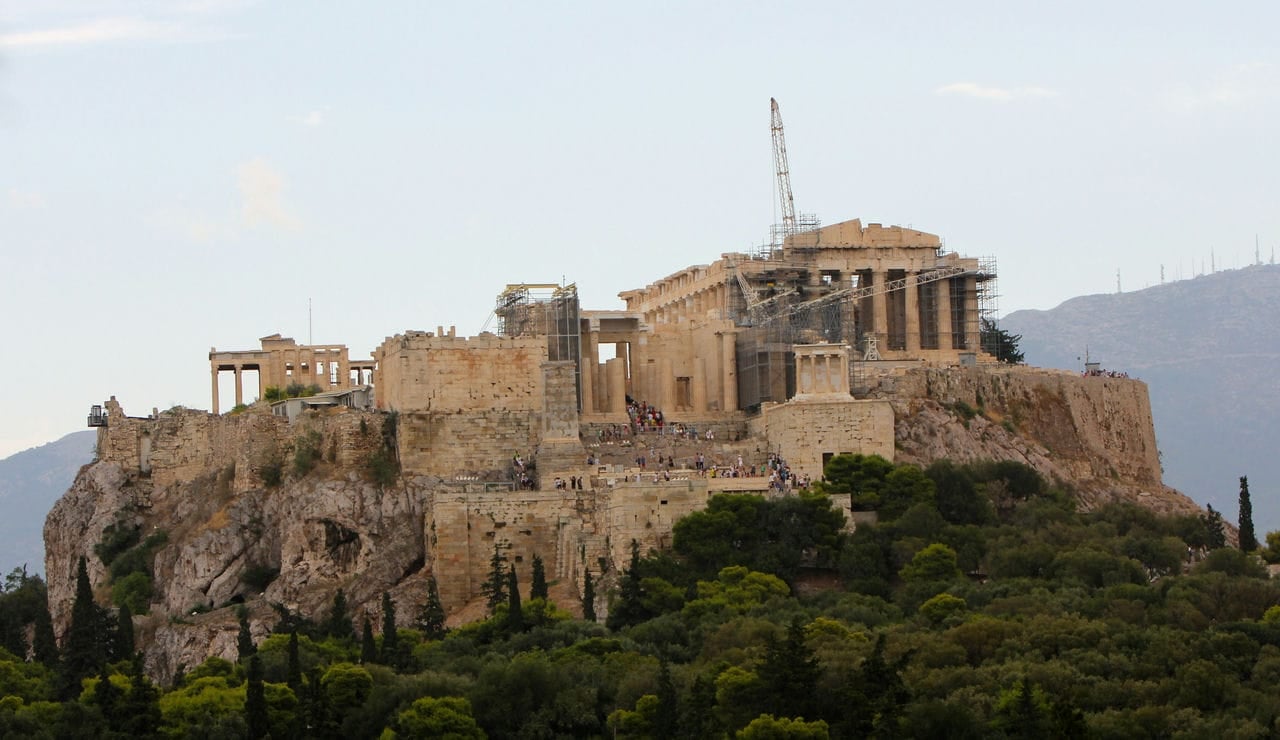
How does the Acropolis of Athens comply with contemporary safety and accessibility standards?
The Acropolis of Athens has made significant ways to comply with contemporary safety and accessibility standards. Firstly, the Acropolis has implemented emergency management measures to protect against natural hazards. This includes evaluating evacuation solutions for hazardous events and considering the number of visitors on the hill at a given time. Secondly, the Acropolis has substantially improved accessibility, particularly for individuals with disabilities. A significant development was the installation of a new concrete pathway to facilitate wheelchair access. This pathway, laid over a synthetic membrane to protect the ancient stones underneath, replaced an older walkway from the 1970s. Thirdly, a lift for wheelchair users was installed, initially only for wheelchair users but later expanded to include others, making the Acropolis more accessible. The new concrete pathway led to a dispute between authorities aiming to broaden accessibility and those concerned about potential damage to the site’s historical integrity. Fourthly, the Acropolis Museum has implemented security regulations to protect the exhibits and ensure visitor safety. These regulations include restrictions on photography and filming and the use of special technical equipment. Lastly, the Acropolis has also had to comply with rules due to its status as a UNESCO World Heritage Site. This includes adhering to Greek Accessibility Guidelines and urban planning legislation and meeting the International Paralympic Committee’s expectations for an accessible city.
Are there any specific tours for architects or architecture enthusiasts visiting the Acropolis of Athens?
Yes, the Acropolis of Athens offers several tailored tours for architects, design professionals, and architecture enthusiasts. Guided tours provide an in-depth exploration of the architectural and engineering feats of the Acropolis’s ancient monuments. The Acropolis and New Acropolis Museum Highlights Tour from Athens Urban Adventures includes unique insights from architects and historians on the structural mastery behind the Parthenon’s construction. Viator’s Acropolis of Athens Small-Group Walking Tour with an architect’s guide offers a comprehensive architectural perspective on the temples and sanctuaries of the Acropolis. These can be adapted to each group’s specific interests. Their Acropolis After Hours Tour offers rare out-of-hours access for a peaceful sunset visit. Some operators like Artchitectours offer tours of Athens’ broader architectural landscape, exploring how ancient forms have influenced modern Greek architecture.
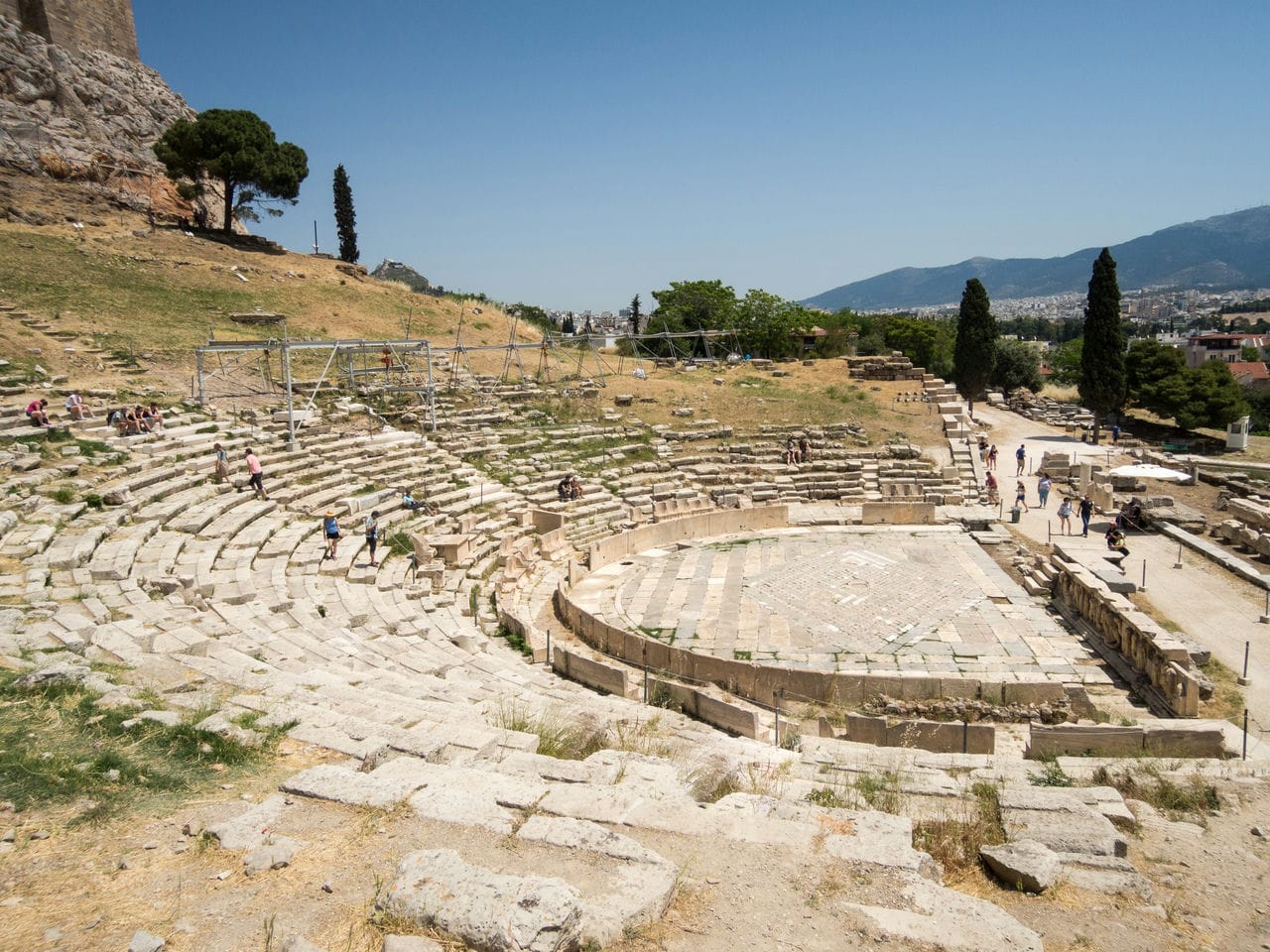
What lessons can architects learn from the design and construction of the Acropolis of Athens?
The Acropolis of Athens offers valuable lessons for architects. Firstly, the Acropolis exemplifies the importance of site-specific design. The architects of the Acropolis, Ictinus, and Callicrates, took into account the uneven ground and the natural topography of the hill, creating a design that integrates with its surroundings. This approach can inspire contemporary architects to consider the unique characteristics of a site when designing, ensuring that the built environment complements rather than disrupts the natural landscape. Secondly, the Acropolis demonstrates the significance of engineering ingenuity and precision in construction. The ancient Greeks used a system of pulleys, ropes, and wood cranes to lift and position the marble blocks, showcasing their advanced understanding of construction techniques. The columns of the Parthenon were made of carved and matched “slices,” allowing the entire building to oscillate but not collapse in the event of an earthquake. This level of precision and attention to detail can encourage modern architects to strive for excellence in their designs and constructions. Thirdly, the Acropolis underscores the value of cultural and spiritual significance in architecture. The Acropolis served not only as a monumental complex but also as a cultural and community hub, reflecting the beliefs, values, and traditions of the society it was built. This can remind architects of the importance of creating spaces that resonate with their users’ cultural and social context. Lastly, the Acropolis teaches the importance of sustainability and resilience in architecture. Despite enduring wars, explosions, fires, earthquakes, and other adversities over almost twenty-five centuries, the Acropolis has remained standing, a testament to the durability and longevity of its design and construction. This resilience can inspire architects to prioritize sustainability and durability in their designs, creating structures that can withstand the test of time and changing conditions.
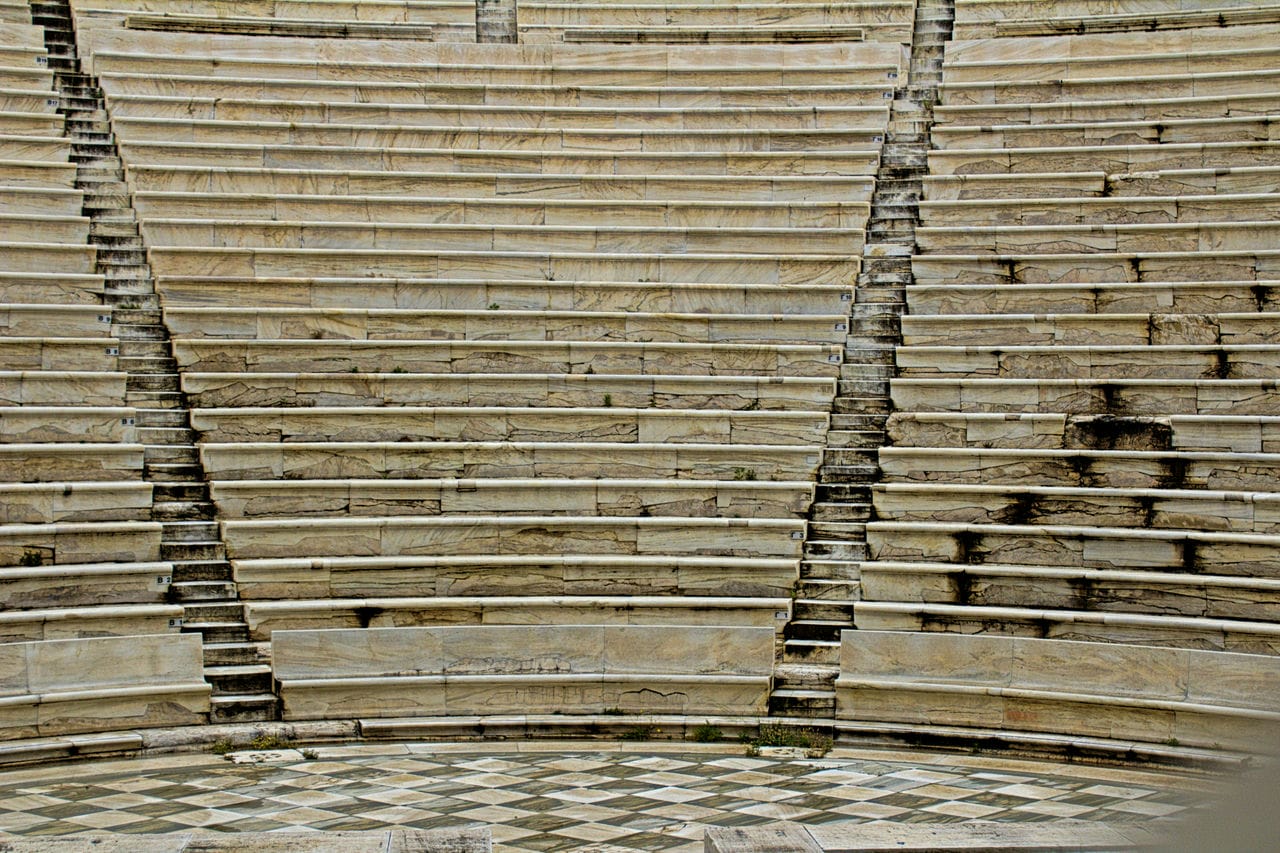
What are the best architectural landmarks in Greece to visit as an architect?
Listed below are the best architectural landmarks in Greece to visit as an architect:
- The Parthenon, Athens: The Parthenon is a must-visit for architects exploring classical architecture and its enduring principles. Completed in 432 BC on the Acropolis, it was designed by Ictinus and Callicrates under the direction of the sculptor Phidias. This temple, dedicated to the goddess Athena, exemplifies the Doric order. It is famous for its proportional harmony and use of entasis (slight curvature of columns) to counteract optical illusions and sculptural details. The Parthenon’s beauty and structural ingenuity make it a pivotal study in the evolution of Western architecture.
- Theatre of Epidaurus: The Theatre of Epidaurus, dating back to the 4th century BC, is a significant site for architects studying ancient Greek theater design and acoustics. Designed by Polykleitos the Younger, this theater is famed for its exceptional acoustics, allowing even whispered words to be heard clearly throughout its 14,000 seats. Its integration with the natural landscape and the mathematical precision of its layout provide insights into Greek advancements in architectural design and urban planning.
- Temple of Hephaestus, Athens: The Temple of Hephaestus, one of the best-preserved ancient Greek temples, is crucial for architects examining classical temple architecture. Completed in 415 BC, it epitomizes the Doric order and provides a clear example of the mature classical style’s refinements in proportion and detail. The temple’s location in the ancient Agora of Athens makes it an essential study of the relationship between religious and civic architecture in ancient Greek cities.
- Palace of Knossos, Crete: The Palace of Knossos, the largest Bronze Age archaeological site on Crete, is a key destination for architects interested in Minoan architecture and urban planning. The palace, dating back to the second millennium BC, is notable for its complex layout, elaborate frescoes, and early examples of columns. Its design demonstrates advanced architectural techniques, including light wells, and is indicative of the sophisticated urban planning of the Minoan civilization.
- Meteora Monasteries: The Meteora Monasteries atop towering rock formations in central Greece offer architects a unique study of Byzantine architecture and the adaptation of buildings to challenging environments. These monasteries, dating from the 14th century, showcase a blend of natural and constructed elements, reflecting the ideal of withdrawal from the world.
- Delphi Archaeological Site: The archaeological site of Delphi, once considered the center of the world in ancient Greek religion, is significant for architects exploring the relationship between architecture, landscape, and mythology. The site includes the Temple of Apollo, the theater, and the stadium, set against the backdrop of Mount Parnassus. These structures offer a window into ancient Greek religious, cultural, and athletic practices, and their spatial arrangement and design reflect the importance of sacred geography in ancient architectural planning.
- Stoa of Attalos, Athens: The Stoa of Attalos, reconstructed in the 1950s, is pivotal for architects studying ancient Greek stoa architecture, which combined commercial, social, and civic functions. The original stoa, built around 150 BC, was a two-story building with a colonnade, providing a model for developing the public and commercial building typology in ancient Greece. The reconstruction, using ancient techniques and materials, also offers insights into historical preservation and restoration practices.
- Mystras: The archaeological site of Mystras, near Sparta, offers architects a comprehensive view of Byzantine architecture and urban design. Established in the 13th century, Mystras became a center of Byzantine culture and power. The site includes palaces, churches, monasteries, and houses on a hillside with a natural fortress-like quality.


